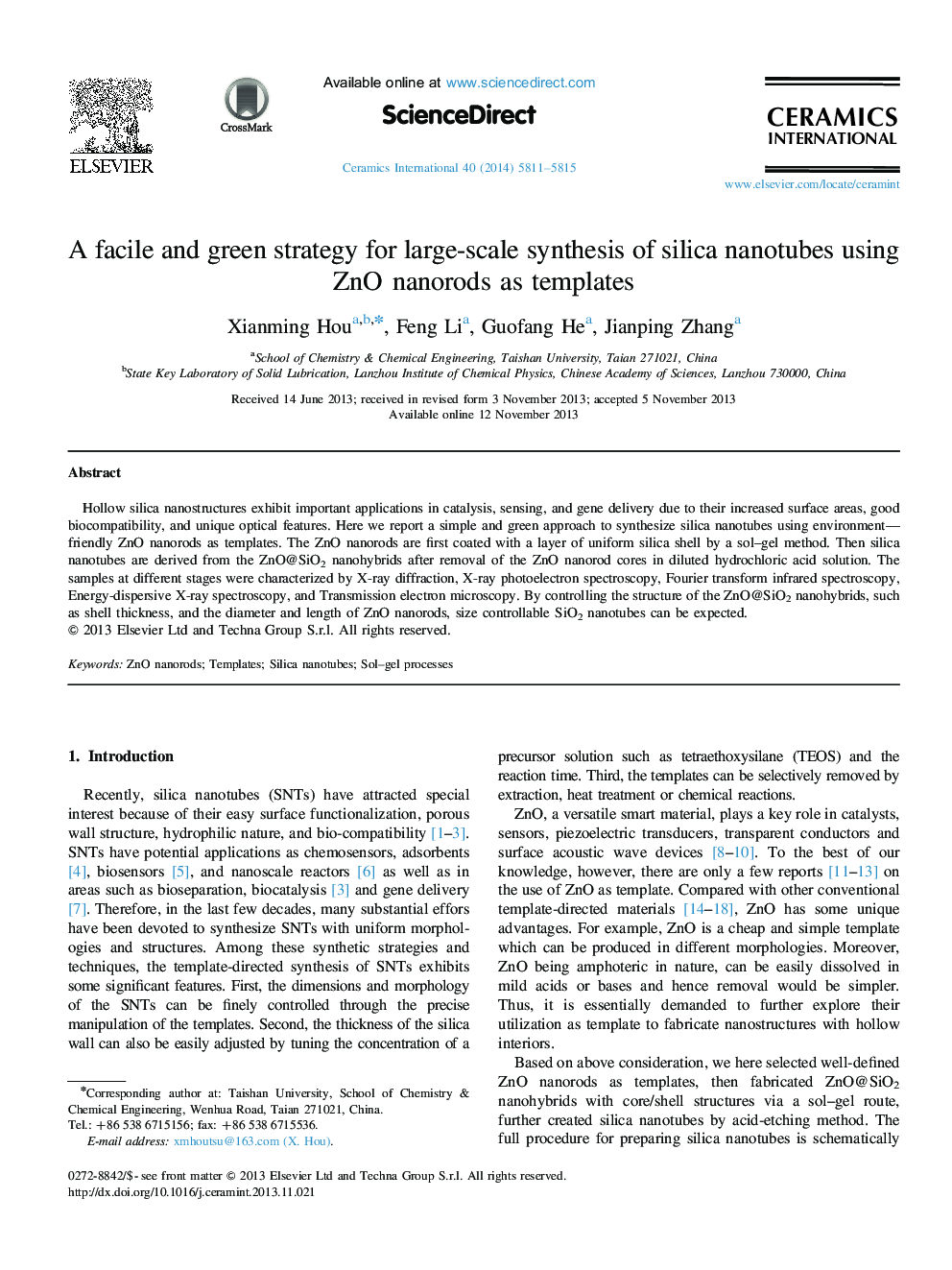| Article ID | Journal | Published Year | Pages | File Type |
|---|---|---|---|---|
| 10625834 | Ceramics International | 2014 | 5 Pages |
Abstract
Hollow silica nanostructures exhibit important applications in catalysis, sensing, and gene delivery due to their increased surface areas, good biocompatibility, and unique optical features. Here we report a simple and green approach to synthesize silica nanotubes using environment-friendly ZnO nanorods as templates. The ZnO nanorods are first coated with a layer of uniform silica shell by a sol-gel method. Then silica nanotubes are derived from the ZnO@SiO2 nanohybrids after removal of the ZnO nanorod cores in diluted hydrochloric acid solution. The samples at different stages were characterized by X-ray diffraction, X-ray photoelectron spectroscopy, Fourier transform infrared spectroscopy, Energy-dispersive X-ray spectroscopy, and Transmission electron microscopy. By controlling the structure of the ZnO@SiO2 nanohybrids, such as shell thickness, and the diameter and length of ZnO nanorods, size controllable SiO2 nanotubes can be expected.
Related Topics
Physical Sciences and Engineering
Materials Science
Ceramics and Composites
Authors
Xianming Hou, Feng Li, Guofang He, Jianping Zhang,
